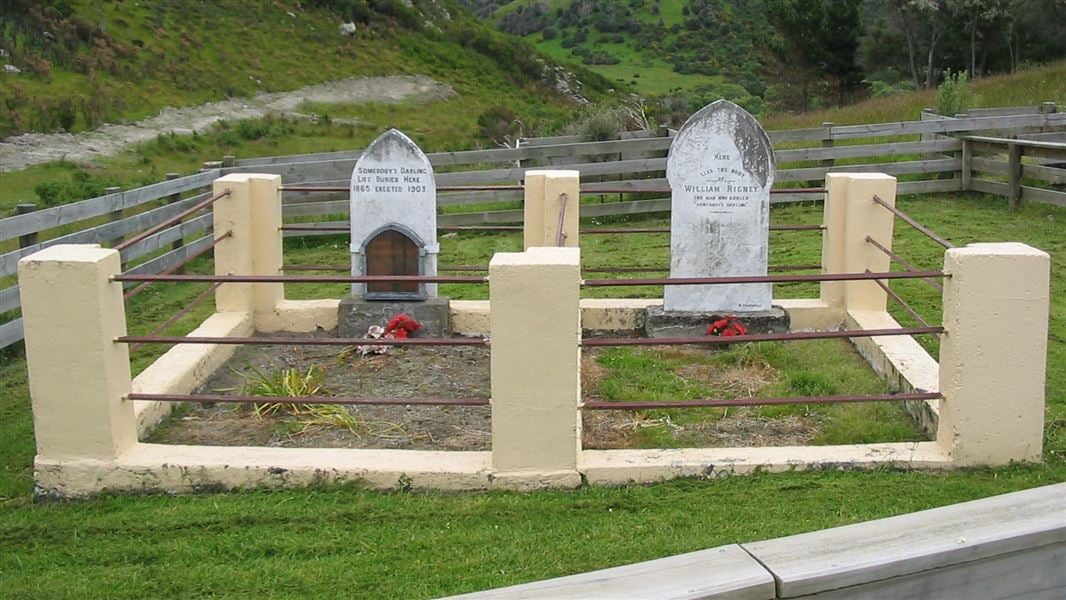History of the reserve
In 1863 this quiet rural area supported a goldfield called Horseshoe Bend and approximately 200 miners and storekeepers. By 1865 only 72 people remained.
An unmarked grave

An old photo of Horseshoe Bend
Thanks to Betty Adams for gaining image use permission. | ©
In 1865 gold miner William Rigney came to Horseshoe Bend. An unmarked grave caught his attention.
This grave was where the body of a man who had been found on nearby Rag Beach in February 1865 had been buried.
At an inquest held soon after the body was found, Sgt McCluskey reading from the Police report of the drowning of Charles Alms, and witness Owens who knew “Charlie the Butcher”, thought the deceased could possibly be that of Charles Alms who drowned while crossing the Molyneux/Clutha River at Mutton Town Creek, some 70 km upstream, about a month earlier.
The body’s height and clothes were similar to the missing man. William Lawrence Simpson, the Justice of the Peace acting as Coroner during the inquest, could not confirm the identity of the body due to its decomposition and so the gentleman was buried without a name.
Sometime later Rigney and a fellow miner named Ord erected a fence of manuka poles around the grave. Later Rigney obtained a piece of black pine and having shaped it into a headboard used a tomahawk and a four-inch nail to engrave the words ‘Somebody’s darling lies buried here’.
William Rigney's grave
Rigney confessed to a special interest in the grave, having a foreboding that his lot would be the same – a lonely grave on a bleak hillside. He was said to have expressed his desire to be buried alongside the grave, and thanks again to local residents his wishes were met on his death in 1912.
His headstone reads “Here lies the body of William Rigney the man who buried ‘Somebody’s Darling’ ”, reflecting the popular myth that Rigney had both found the body and buried it – claims denied by Rigney himself.
With the deteriorating state of the board noticed by the local community, sufficient funds were raised in 1903 to erect a marble headstone, and thus perpetuate Rigney’s memorable words. Later the remains of the wooden headboard were renovated and attached to the new headstone.
Symbolic site memorialising lonely deaths
The respect, reverence and care for this site, first shown by William Rigney is continued to this day. This site is symbolic. It memorialises all those who died lonely deaths on the goldfields and were often buried in long forgotten graves near where they were found
Getting there
On the Millers Flat-Beaumont road, travel 8 km south east of Millers Flat.
